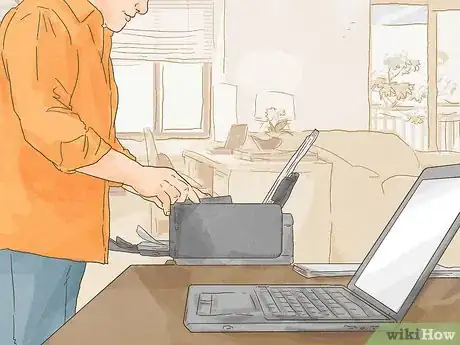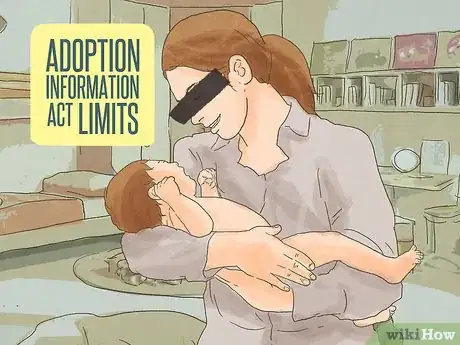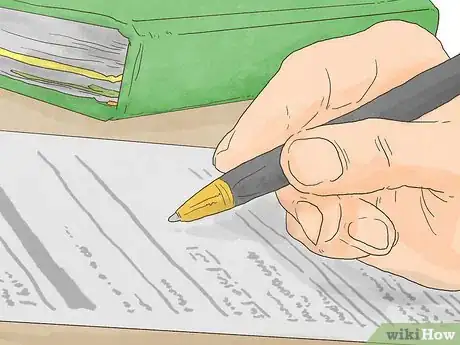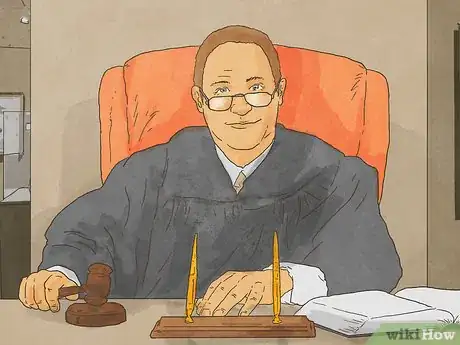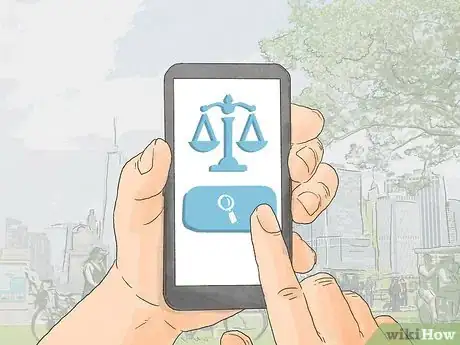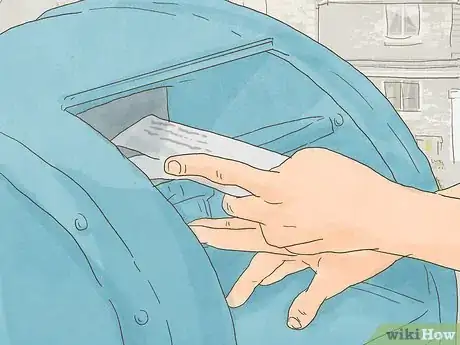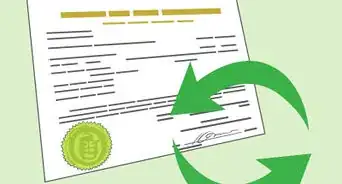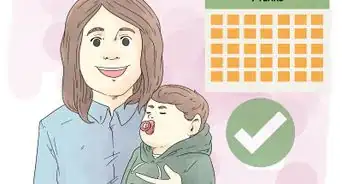This article was co-authored by Clinton M. Sandvick, JD, PhD. Clinton M. Sandvick worked as a civil litigator in California for over 7 years. He received his JD from the University of Wisconsin-Madison in 1998 and his PhD in American History from the University of Oregon in 2013.
This article has been viewed 41,187 times.
California, like most states, is a "closed adoption" state. This means that adoption records are sealed once an adoption is finalized.[1] This protects the privacy of families, but makes it difficult for blood relatives separated by adoption to contact one another. California has two ways that parties to an adoption can voluntarily establish contact, and allows adoptees to access non-identifying background and medical information about their birth parents.
Steps
Using the Mutual Consent Program
-
1Know the limitations of the Mutual Consent Program. The program allows adoptees and their birth parents and siblings to access each others' contact information if both parties have submitted consent forms. Once you submit your consent form, you will have to wait to find out if or when the other party submits a consent form. Neither the California Department of Social Services (CDSS) nor the agency that handled the adoption is allowed to contact the other party and ask for their consent. In short, the Mutual Consent Program can only help if both parties are trying to contact each other.
-
2Download the proper form. There are three forms available for different types of applicants, depending upon whether they are an adoptee, birth parent, sibling, or step-sibling; and whether the applicant is an adult or a minor under the age of 18. The forms are available online.
- Form AD 904, available at http://www.cdss.ca.gov/Forms/English/AD904.pdf, for adult adoptees and birth parents.
- Form AD 904 A, available at http://www.cdss.ca.gov/Forms/English/AD904A.pdf, for adult adoptees, adult siblings, and adult step-siblings.
- Form AD 904 B for minor adoptees, minor siblings, and minor step-siblings.
Advertisement -
3Fill out the forms. Each form requires you to enter some identifying information, such as your name, address, and any other names you have used. Your signature must be witnessed by a notary public, CDSS representative, or a licensed adoption agency representative. For this reason, do not sign your form right away.
-
4Attach the necessary documents if you are a sibling or step-sibling. For Forms 904 A and B, a sibling must attach a copy of his or her birth certificate. Step-siblings must attach a copy of a birth certificate and either a copy of a marriage certificate or a divorce decree for the marriage between his or her birth parent and step-parent.
-
5Sign the form before the proper witness. Before you sign, take your form to a CDSS representative, a licensed representative of the adoption agency that handled the adoption, or a notary public. A CDSS or adoption agency representative will complete Part B of the form. If you take your form to a notary public, he or she will complete Part D.
- If you are able to deliver the form in person to the adoption agency or a CDSS office, you can have your signature witnessed at the same time you submit the form. If you need to mail the form, you should have it notarized instead.
- If you are a minor completing Form 904 B, you will need to have your parent or legal guardian sign the form in the witness's presence as well.
-
6Submit the form. To turn in your form, send it to the adoption agency which handled the adoption, if known, or to Central Office: Adoptions Support Unit, Department of Social Services, 744 P Street, M.S. 8-12-31, Sacramento, CA 95814. If necessary, CDSS will return your form to you, with the correct address of the proper adoption agency for you to submit your form. Once your consent form reaches the proper agency, the agency will file the form and alert you if and when another party submits a consent form.[2]
Using the Adoptions Information Act
-
1Know the limitations of the Adoptions Information Act. The Act allows adult adoptees to request the names and addresses of their birth parent(s) when the birth parent signed a relinquishment or consent for adoption, or had his or her parental rights involuntarily terminated by court order in or after 1984; and the birth parent also signed an Adoptions Information Act Statement (AD 908), available at http://www.cdss.ca.gov/cdssweb/entres/forms/English/AD908.pdf Adoptions Information Act.
-
2Fill out the proper form. You will need to download Form AD 908 A, available at http://www.cdss.ca.gov/cdssweb/entres/forms/English/AD908A.PDF. You must then fill in some identifying information, including your name, address, and any other names you have used. Your signature must be witnessed by a notary public, CDSS representative, or a licensed adoption agency representative. For this reason, do not sign your form right away.
-
3Sign the form before the proper witness. Before you sign, take your form to a CDSS representative, a licensed representative of the adoption agency that handled the adoption, or a notary public. A CDSS or adoption agency representative will complete Part B of the form. If you take your form to a notary public, he or she will complete Part D.
- If you are able to deliver the form in person to the adoption agency or a CDSS office, you can have your signature witnessed at the same time you submit the form. If you need to mail the form, you should have it notarized instead.
-
4Submit the form. To turn in your form, send it to the adoption agency which handled the adoption, if known, or to Central Office: Adoptions Support Unit, Department of Social Services, 744 P Street, M.S. 8-12-31, Sacramento, CA 95814. If necessary, CDSS will return your form to you, with the correct address of the proper adoption agency for you to submit your form. Once your consent form reaches the proper agency, the agency will file the form and alert you if and when another party submits a consent form.[3]
- Private adoption agencies may charge a small fee for this service.[4]
Petitioning For an Intermediary to Contact a Sibling
-
1Submit a confidentiality waiver. You can ask a court to appoint a confidential intermediary to contact your sibling on your behalf. Before you submit your request to the court, however, you must first try to utilize California's Mutual Consent Program by submitting a AD 904 A or 904 B form to CDSS or the adoption agency that handled the adoption. If your sibling has not also submitted a confidentiality waiver, you can proceed in requesting the appointment of a confidential intermediary.
-
2Fill out a Request for Appointment of Confidential Intermediary. You will need to download and complete Form ADOPT-330, available at http://www.courts.ca.gov/documents/adopt330.pdf. You will use this form to formally ask the court to appoint a confidential intermediary to contact your sibling on your behalf. You will need to provide the name of your sibling, as well as other identifying information about yourself and the sibling you are trying to contact.
-
3Attach an Order for Appointment of Confidential Intermediary. Download and print Form ADOPT-331, available at http://www.courts.ca.gov/documents/adopt331.pdf. This is the blank form upon which the judge will enter his or her order. Leave this form blank, but include it when you submit your paperwork to the court clerk.
-
4File your paperwork. Take your forms to the court clerk in the county where the adoption took place. The clerk will assist you with the filing of your forms. The clerk may charge a filing fee. Contact your county's court clerk for information about filing fees.
-
5Wait for a response. After you file your paperwork, the judge will review your petition, and the court clerk will contact you with the judge's decision. If the judge decides to appoint a confidential intermediary to contact your sibling, the court's order will be forwarded to CDSS or the adoption agency.[5] Then an intermediary will try to contact your sibling and ask if he or she would like to complete a waiver form.
Petitioning the Court for an Original Birth Certificate
-
1Locate the proper court. You can ask a court to order the release of your original birth certificate. To do so, you must file a petition under one of two codes sections: Health and Safety Code Section 102705, or Family Code Section 9200. If you are petitioning under the Health and Safety Code, you can file your petition in the county where you live, or in the county where the adoption was finalized. If you are petitioning under the Family Code, you must file your petition in the county where the adoption was granted.
-
2Get the proper forms. Different counties in California use different forms for these types of requests. Contact your court clerk to find out exactly which forms you should use for a petition in your county. You will be required to provide identifying information about yourself and the adoption proceeding. You must also give the reasons why you are requesting the birth certificate.[6] The court can deny your request if it determines that your interest in obtaining the birth certificate is outweighed by the privacy interests of the adoptee or the birth parents.
- For example, San Mateo County uses a form called "Adopt-10" (https://www.sanmateocourt.org/documents/forms_and_filing/adopt-10.pdf) for Health and Safety Code requests, while Ventura County uses a form called "VN200" (http://www.ventura.courts.ca.gov/local_forms/VN200.pdf) for requests under the Health and Safety and Family Codes.
-
3File your forms and attend a hearing if necessary. Take your forms to the court clerk, who will assist you with the filing. You may be charged a filing fee. The clerk will inform you whether you will need return to court for a hearing. Otherwise, the judge will review your petition and grant or deny it. The court clerk will inform you of the court's decision.
- If you cannot afford to pay the filing fee, ask the clerk for information on how to file an application for a fee waiver.
Requesting Non-Identifying Background Information
-
1Make a written request. You can make a written request for certain non-identifying background information about your birth parents and the adoption. This information may include: date and place of birth, age and physical description of parents, race, ethnicity, religion, medical history, education level, occupation, and the existence of other children born to those parents.[7]
- In your request, include your name, birth date, and the full names of both of your adoptive parents.
- Type or legibly handwrite your request. You cannot make your request via email.
-
2Have your signature notarized. Sign your request in the presence of a notary public. The notary will notarize your request, verifying that you signed the document in his or her presence. Bring a valid form of identification, such as a driver's license or passport, to verify your identity.
- To find a notary online, visit the Notary Public Directory. You can also find a notary public by visiting your local bank. Most banks do not charge a fee for notary services if you are a bank customer. If you are not a bank customer, you can use the bank's notary service for a small fee.
-
3Mail your request. Send your request directly to the adoption agency that handled the adoption, or to CDSS at California Department of Social Services, Adoptions Support Unit, 744 P Street, M.S. 8-12-31, Sacramento, CA 95814. Some private adoption agencies may charge a fee for this service. If you are submitting your request to an adoption agency, ask about any fees before you submit your request.
Warnings
- This article is intended as legal information and does not provide legal advice. If you need legal advice, contact a licensed attorney.⧼thumbs_response⧽
References
- ↑ https://www.childwelfare.gov/pubPDFs/infoaccessap.pdf
- ↑ http://www.cdss.ca.gov/Forms/English/AD904.pdf
- ↑ http://www.cdss.ca.gov/Forms/English/AD904.pdf
- ↑ http://www.cdss.ca.gov/cdssweb/entres/forms/English/AD908.pdf
- ↑ http://www.courts.ca.gov/documents/adopt330.pdf
- ↑ http://www.ventura.courts.ca.gov/local_forms/VN200.pdf
- ↑ https://www.childwelfare.gov/pubPDFs/infoaccessap.pdf

